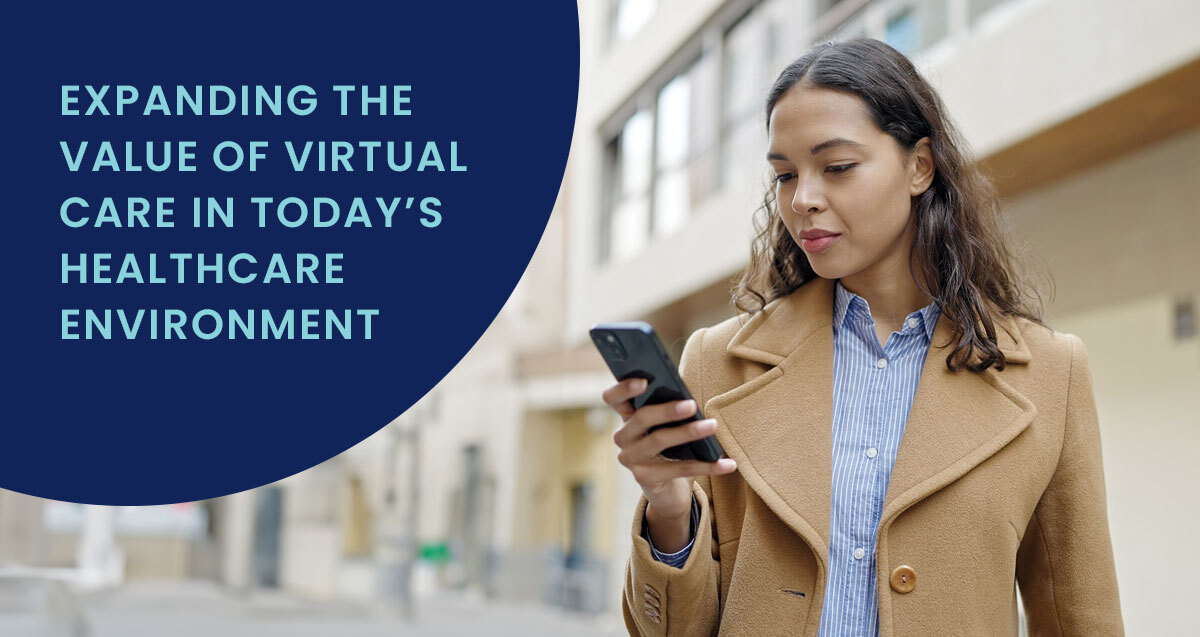HLTH VRTL 2020 kicks off on thousands of computer screens with a focus on the digital future of healthcare. This year’s agenda focuses on health innovation and transformation driven by the COVID-19 pandemic, with HLTH saying 2020 is “the year that everything changed.”
The pandemic certainly has changed the way we work, live and access healthcare. Use of telehealth services skyrocketed since the pandemic hit. According to a recent Forrester report, U.S. telehealth visits will surpass 1 billion by the end of 2020, including 900 million visits related to COVID-19.
At HLTH VRTL 2020, we’re excited to see payers, providers, employers, investors, startups, pharma and policymakers come together to discuss ways to deliver a better patient care experience during the pandemic and beyond. Collaboration among all of these stakeholders is essential to overcoming the challenges of healthcare costs and access.
We’re watching these four trends as healthcare shifts to a more patient-centric model. We’re excited to discuss these with conference attendees throughout the week.
1. KEEP EMPLOYEES SAFE IN THEIR ENVIRONMENTS
Today employers are focused on either keeping employees safe on the job or bringing them safely back to work after closure, furlough, remote work or other absence. With cold and flu season upon us, and the symptoms of common respiratory illnesses very similar to those of COVID-19, employers face the added burden of helping employees determine one illness from the others. Nobody wants to bear the burden of making the wrong decision that results in others in the workplace getting sick, yet employers don’t want to unnecessarily keep employees out of work.
Telehealth has provided a way for employees to get answers to their health questions from qualified physicians, rather than employers having to give medical advice, which is not their area of expertise nor should it be their role.
2. MAXIMIZE THE USE OF INVESTED BENEFITS
Recognizing how preventable conditions such as obesity, diabetes and heart disease - and poor lifestyle choices like smoking, unhealthy eating and lack of exercise - add significant costs to healthcare delivery, employers have spent a great deal of money over the years on ‘invested benefits’ for their employees. The problem is that these investments offer no benefit if employees don’t use them. Today employers can leverage telehealth as a way for physicians to seamlessly connect employees to selected resources as part of a virtual care visit. With visibility across all of an employer’s invested benefits options, a telehealth physician can direct employees to programs specific to their conditions and needs.
3. INTEGRATE THE CARE CONTINUUM
Patients depend on their primary care physicians (PCP) as a way to access healthcare, whether it ends at the PCP’s office or in a referral to a specialist for subsequent care. A major problem facing conventional healthcare delivery is the inability for patients to get the care they need when and where they need it. This has been highlighted by the COVID-19 pandemic where patients faced the closure of physician offices or have been hesitant to access in-person care in fear of contracting the virus. Telehealth increasingly bridges the gaps in care, such as connecting a patient with a physician via text during a break at work or in the middle of the night with an emergent health concern. The most advanced telehealth solutions take it one step further and serve as a gateway to specialty care, for example, a telehealth doctor offering a referral to an endocrinologist for diabetes management or a psychiatrist for behavioral health issues.
4. ALLEVIATE THE BURDEN OF THE BEHAVIORAL HEALTH CRISIS
Perhaps one of the most significant impacts of the COVID-19 pandemic is the stress and anxiety suffered by countless individuals as they struggle with health fears, job insecurity, financial losses and social isolation. In a recent survey, 2 in 3 employees reported they are feeling more stressed than before the pandemic began, and 74 percent are concerned about at least one aspect of their wellbeing. The behavioral health burden of COVID-19 has a direct impact on employers, as those employees who are stressed are less motivated and productive. An integrated telehealth solution where patients have 24/7, text-first access to a full range of specialists, including mental health professionals, enables employees to get the support they need quickly, conveniently and in the privacy of their own homes. Among consumers surveyed, 71 percent who received psychologist or psychiatrist care since March 1, 2020 did so virtually.





